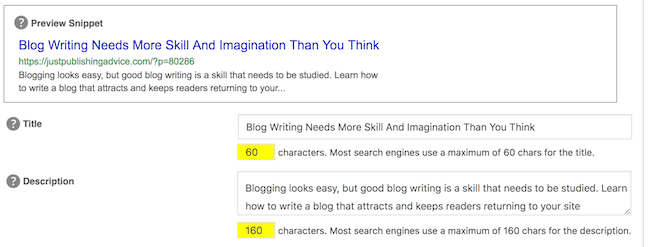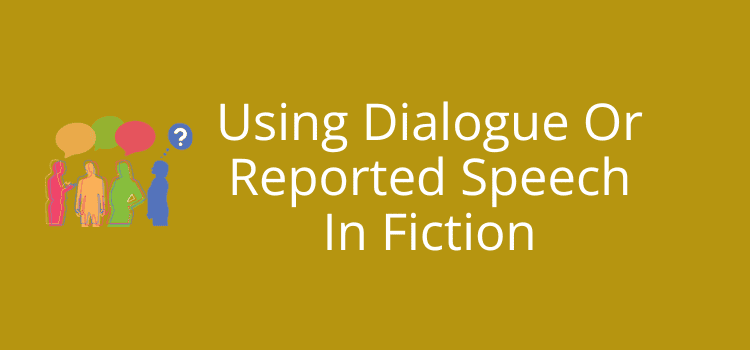
Writing a blog post might seem like an easy thing to do. Write 500 words on your pet topic of the day, do a quick proofread, and then hit publish.
Many blogs and websites use this or a similar formula.
When you start a new blog, you know you need content, so you write as many posts as possible.
Then, you cross your fingers and hope people will find and read your blog.
Get the basics right
Perhaps you try to promote your blog on social media to your few hundred connections. Social networks can help a little. However, successful bloggers know that search engine traffic is the only way to access users worldwide.
But luck alone will not get a search engine to index your posts. You have to plan tomake it happen. Before you put pen to paper, you might want to consider the following issues.
Whether you want to create a new blog or have already started one, you need the right structure and blogging tools.
1. Platform. If you are serious about wanting to be a success, the only choice is WordPress. Free blogging platforms are an easy step. But they are highly restrictive and will never give you access to the tools and options you need to blog successfully. Nor will they allow you to monetize your blog freely.
Learning how to use a self-hosted WordPress site is the first vital step in succeeding at blogging.
2. Domain name. Your blog needs to be hosted on its own domain and should use a .com address.
3. SEO tools. Search engine optimization (SEO) software is vital. It is the only way to maximize your chances of search engine indexing on Google, Bing, and Yahoo. You definitely need to use a WordPress SEO plugin such as All In One Seo or Yoast. Both offer free and paid versions.
Both of these plugins will let you set up a sitemap to tell search engines about your site and add SEO metadata. You might also want to consider a professional competitive research tool like Semrush or Ahrefs. All of the top bloggers use these pro tools, but the prices are not cheap.
However, if you plan to make real money from blogging, it is an investment you might need to consider.
Now, you are ready to start blogging like a pro.
Define your niche
There are millions upon millions of blogs. But only a tiny percentage get high traffic numbers and succeed.
Good blogging starts by choosing a topic and knowing what your blog is about. A poor blog is about everything and anything.
A successful blog is highly focused on one narrow topic or subject that will build trust over time.
A great blogger is an expert, and readers love to read expert advice or opinions.
For example, if you are into photography, specialize in one narrow niche, such as digital SLR, smartphone cameras, or black-and-white photography.
The more narrow your topic, the more chance you will have of becoming an expert and trusted source.
How to write a great post
Now you have all the technical basics in place; it’s time to start blogging for your readers and search engines.
The key to writing a post is to focus on two objectives.
The first is to write terrific articles that search engines will recognize as great content and then index them.
The second is to fully satisfy the readers who click on your article listing in Google or Bing.
It’s a little bit of chicken and egg. What comes first? Satisfy readers or search engines?
In the end, the best writing advice is that you are in digital marketing, so you always need to satisfy both.
So, let’s go through the steps one by one.
1. Do your research

Once you have an idea for an article, start making some notes and think about what you imagine readers would want to know.
What do you know that would be of interest? Do you want to present it as a story, a listicle, or a review?
Now, do a Google search and look for external support for your topic.
Read some articles on your topic and look for ideas you can use as writing tips. Think about ways you could write a much better article. Can you add more information, use your experience, add original images or include reviews?
Take note of the length of competitive articles, and aim to exceed their word count.
You should include at least one or two external links to reputable, preferably high-ranking sites. Decide which ones you will use to support your subject.
External linking is good for your readers and your SEO.
Once your outline and notes are ready, you need to do your keyword research.
Start by finding the primary keyword you would like to rank for, plus a selection of semantic keywords.
For instance, if your main keyword is Apple iPad Pro, your semantic or related keywords might be macOS, iOS, iPhone, MacBook Pro, old iPad, iPad pencil, and MacBook Air.
You can use Google to help you. Or you can use pro tools to find your competitor’s long-tail keywords and then list the associated semantic keywords.
2. Write a draft
Using your research, now start writing your post.
In your very first sentence, make sure you include your main keyword or a variation.
You should have a word count in mind from your research. But generally, a good length is at least 1,000 words and preferably closer to 2,000.
In-depth articles are much better for SEO and your readers than short ones.
As you write, try to include some of your semantic keywords. But don’t force them into your text.
Feel free to skip some if you can’t find a way to include them naturally. In most cases, you can change your sentence form or grammar to add a few. Blogging is definitely a form of creative writing, so be creative.
Don’t worry about formatting at this time. Focus purely on writing compelling and informative content.
If you are writing for content marketing, include your calls to action.
When you have finished, you have a few final tasks.
Decide on your post title, but you must include your primary keyword. It is the title you have above your article text.
You can also use an alternative title for your SEO title. This title will be seen by search engines.
It should be different from your main title but must also include the same primary keyword. It should be no more than 60 characters long.
Next is to write your SEO description. It needs to be no more than 160 characters long, and again, it must include your keyword.

The four placements of your primary keyword are very important.
The main title, first sentence, SEO title, and SEO meta description
These are the locations that tell search engines about your main topic. Your semantic keywords then support your article’s variety and richness and will help you gain more indexed keywords.
One article can rank for 20, 100, or even 1,000 keywords, which is why long-tail semantic keywords are valuable in helping you get more traffic to your blog.
3. Make space

Reading on screens is not the same as reading on paper.
Because over 50% of blog readers read on handheld devices, you need to accommodate them.
Make your blog post look aesthetically pleasing so people will WANT to read it.
You need to break up the text into small chunks and allow plenty of space in between. Forget about paragraphs altogether.
Look at your text, and add space between the sentences. Only keep short sentences together.
Break up your text with images because they are appealing and give your readers’ eyes a short break.
If you have included links, make space around them to allow room for a thumb to click on a smartphone.
Make sure your internal links open in the same tab and all external links open in a new tab. This will keep your readers on your site for much longer.
Designing a visually pleasing blog post that works in the way you want it to is almost as important as writing it.
4. Read your post
Once you’ve written your post, read it in preview and consider how a reader might react to it.
Is the subject matter in a logical order? Have you included all the necessary information?
Does it look appealing? Are there any ugly clumps of heavy text? Do you need to add another image?
Have you addressed the reader using the second person?
Depending on your answers, go back and edit your post to make it even better.
Rinse and repeat if necessary.
5. Quality content is error-free
A high-quality article is free of grammar and spelling errors and typos.
It is time-consuming but vital to find all the errors and correct them. You can do it yourself or get someone to help you.
But the quickest and most efficient way is to use an online grammar and spell checker.
There are many fine online grammar tools, so select whichever one you are most comfortable using.
Once you have eliminated all the obvious errors, it’s time to get meticulous.
6. Careful proofreading
How many times should you proofread your text?
At least three times, and preferably also by someone other than yourself, if you want to publish a high-quality text.
Take it line by line, and even read it from bottom to top, sentence by sentence.
A good practice for proofreading is to say to yourself, well, okay, just one more time before I publish.
Summary
In your first year, you won’t be able to compete with big-name bloggers like Neil Patel, Darren Rowse, or Seth Godin.
Writing popular posts is hard work combined with an element of good luck.
But all of them started from zero and built their businesses on the back of excellent writing.
If you have thoughts about monetizing, writing lots of fantastic content is the best way to start. Then, promote your new articles as much as you possibly can.
Once your site starts to rank on search engines and attracts a steady stream of organic traffic, monetizing your site will be much more successful.
Without a lot of traffic, you will stand little chance of being approved by Google Adsense or attracting affiliate marketing opportunities.
Creating a successful blog is a step-by-step process. Use the right tools and software, build robust traffic, and then you can think about earning money.
When your blog attracts around 10,000 users a month, you can start considering monetizing options.
But you won’t get rich quickly. It’s always a slow build.
However, once your blog is established, which generally takes at least six months to a year, new possibilities will open up.
These could be a lucrative affiliate program, sponsored posts, email marketing, banner ads, or selling a product or service.
However, all of these will depend on writing quality content for your site, which is content that readers and search engines will love.
Related reading: Easy Ways You Can Improve An Online Article




Good stuff. Always good to remember why we blog and how to make it better. Thanks!